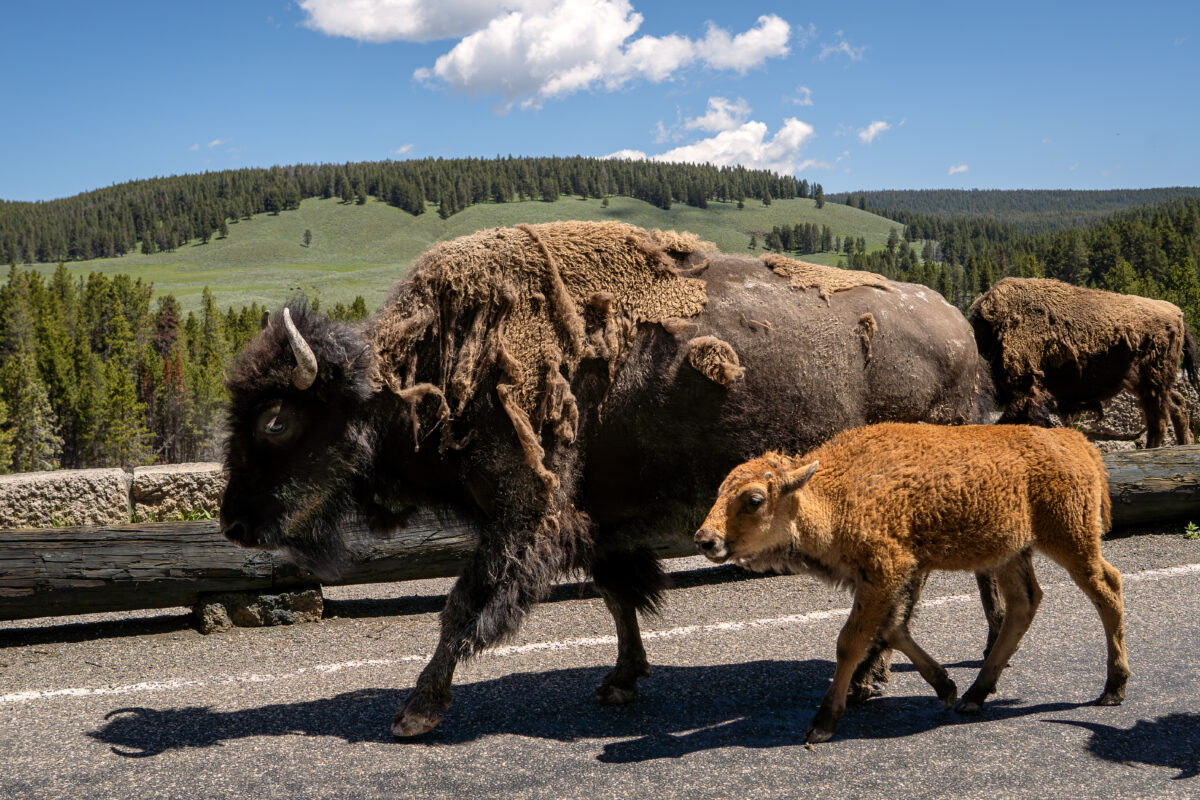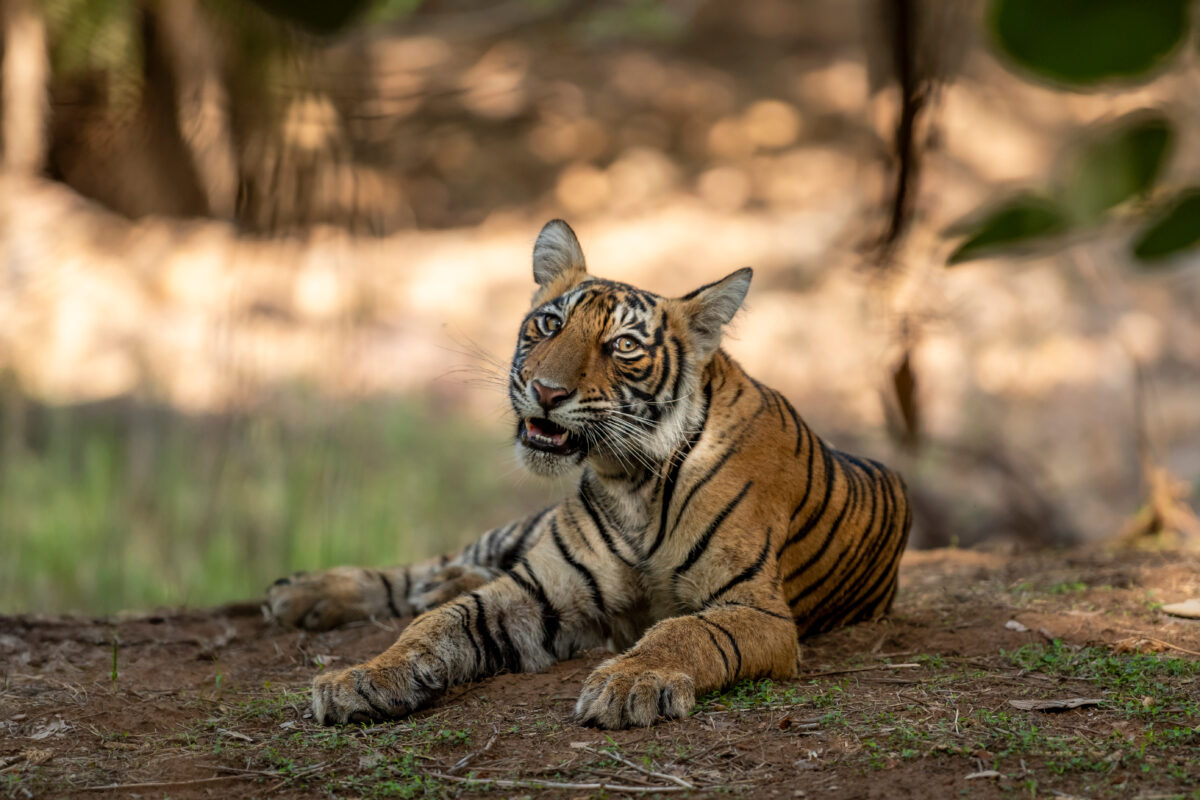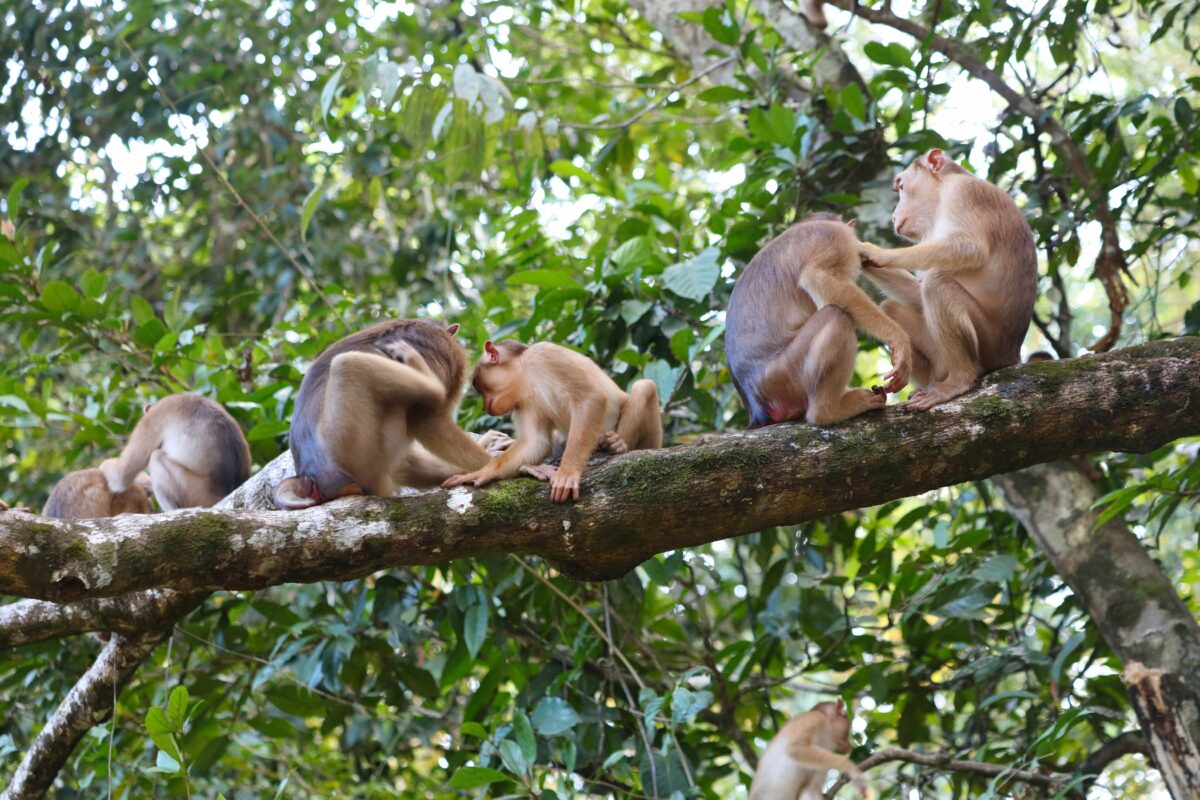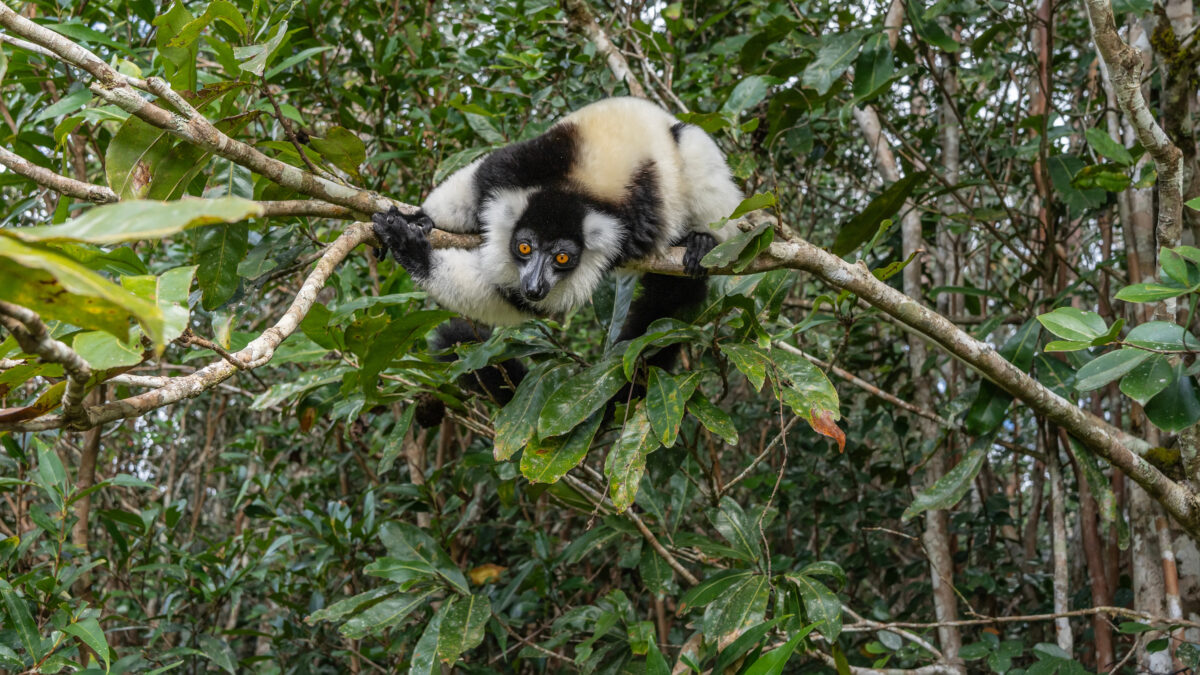Picture this: a sea turtle gliding past you in crystal-clear waters, a tiger emerging through morning mist, or thousands of wildebeest thundering across endless plains. These aren’t just travel moments—they’re life-changing encounters that stay with you forever.
Wildlife tourism is experiencing unprecedented growth in 2025, with the global ecotourism market projected to reach $270.5 billion this year and growing at an impressive 14.31% annually. But here’s what makes today’s wildlife adventures different: travelers now seek experiences that actively protect the animals they’ve come to see.
This shift toward regenerative travel means your adventure can help restore ecosystems, support local communities, and ensure these magnificent creatures thrive for generations. Ready to discover where your next wildlife encounter awaits? These 10 destinations offer the perfect blend of incredible animal experiences and positive conservation impact.
1. Galapagos Islands, Ecuador: Nature’s Living Laboratory

Imagine swimming alongside playful sea lions while marine iguanas bask on volcanic rocks nearby. The Galapagos Islands offer wildlife encounters found nowhere else on Earth, with 97% of the archipelago protected as a national park.
Must-See Wildlife:
- Giant tortoises that live over 100 years
- Blue-footed boobies performing their famous mating dance
- Marine iguanas—the world’s only seafaring lizards
- Galapagos penguins (the only penguins north of the equator)
- Hammerhead sharks in underwater volcanic craters
Best Time to Visit: June to December for cooler waters and active wildlife; January to May for calmer seas and nesting season.
Conservation Impact: Your park fees directly fund research stations and habitat protection, helping maintain this UNESCO World Heritage site.
2. Yellowstone National Park, USA: America’s Wildlife Wonderland

Home to the largest concentration of mammals in the lower 48 states, Yellowstone National Park delivers wildlife drama against a backdrop of geysers and hot springs. Here, 67 mammal species roam freely across 2.2 million acres.
Wildlife Highlights:
- Watch wolf packs hunt in Lamar Valley (best wildlife viewing in North America)
- Spot grizzly bears fishing for cutthroat trout
- Witness bison herds—North America’s largest land mammals
- See elk bugling during fall mating season
- Observe river otters playing in pristine waters
Insider Tip: Visit during shoulder seasons (April-May or September-October) for fewer crowds and active wildlife. Dawn and dusk offer the best viewing opportunities.
Recent Success: Wolf reintroduction has restored natural balance, with ripple effects benefiting the entire ecosystem—a conservation triumph you can witness firsthand.
3. Serengeti National Park, Tanzania: The Greatest Show on Earth

Witness nature’s most spectacular event as 1.5 million wildebeest and 250,000 zebras traverse the Serengeti in an endless cycle of life. This 14,750-square-kilometer wilderness hosts the planet’s largest terrestrial mammal migration.
Migration Calendar:
- December-March: Calving season in southern plains (500,000 calves born)
- April-May: Herds move north through Western Corridor
- July-October: Dramatic river crossings at Mara River
- November: Return journey south begins
Beyond the Migration:
- 3,000 lions—Africa’s largest population
- 1,000 leopards prowling kopjes (rock outcroppings)
- 7,500 spotted hyenas in complex social groups
- Endangered black rhinos in protected areas
Community Impact: Tourism employs thousands of local Maasai people as guides, guards, and hospitality staff, creating economic incentives for conservation.
See Related: Largest Aquariums in the World
4. Kruger National Park, South Africa: Big Five Paradise

Spanning 19,485 square kilometers, Kruger National Park offers one of Africa’s most accessible yet authentic safari experiences. With excellent infrastructure and diverse ecosystems, it’s perfect for self-drive adventures or guided safaris.
By the Numbers:
- 1,500 lions patrolling territories
- 12,000 elephants (one of the largest populations globally)
- 5,000 white rhinos protected by anti-poaching units
- 1,000 leopards—highest density in Africa
- 37,000 Cape buffalo in massive herds
Unique Experiences:
- Walking safaris with armed rangers
- Night drives to spot nocturnal hunters
- Hide photography at waterholes
- Wilderness trails for multi-day hiking
Conservation Win: Kruger’s successful rhino breeding program has helped stabilize populations despite poaching threats, with tourism revenue funding critical protection efforts.
5. Ranthambore National Park, India: Tiger Territory

Ancient ruins merge with wild landscapes at Ranthambore, where Bengal tigers rule supreme. This 1,334-square-kilometer reserve offers some of the world’s best tiger sighting opportunities, with 75 tigers calling it home.
Why Tigers Thrive Here:
- Diverse prey base of 40,000+ animals
- Natural water sources from three lakes
- Strict protection measures and monitoring
- Limited tourist numbers preserving habitat
Other Wildlife Stars:
- Leopards adapting to tiger presence
- Sloth bears foraging for termites
- 200+ bird species including crested serpent eagles
- Marsh crocodiles in ancient reservoirs
Photography Paradise: The 10th-century Ranthambore Fort creates stunning backdrops for wildlife photos, especially during golden hour when tigers often patrol ancient pathways.
6. Borneo, Malaysia: Rainforest Riches

Borneo’s ancient rainforests harbor creatures found nowhere else, including our orange-haired cousins. This biodiversity hotspot faces conservation challenges, making responsible tourism more crucial than ever.
Endemic Wonders:
- Orangutans—only 104,000 remain in the wild
- Proboscis monkeys with distinctive large noses
- Pygmy elephants (world’s smallest elephants)
- Clouded leopards prowling canopy bridges
- Rhinoceros hornbills with 6-foot wingspans
Where to Experience:
- Kinabatangan River: Wildlife highway with river safaris
- Danum Valley: Primary rainforest with canopy walks
- Sepilok Rehabilitation Centre: Orphaned orangutan sanctuary
- Tabin Wildlife Reserve: Mud volcano wildlife spa
Your Impact: Every visitor contributes to local conservation programs, with many lodges employing former loggers as wildlife guides—transforming forest destroyers into protectors.
See Related: Largest Zoos in the World
7. Amazon Rainforest, Brazil: Biodiversity Central

The Amazon hosts 10% of Earth’s species within its 5.5 million square kilometers. This “lungs of the Earth” produces 20% of our oxygen while sheltering incredible wildlife diversity.
Staggering Statistics:
- 2.5 million insect species
- 40,000 plant species
- 1,300 bird species (more than all of Europe)
- 427 mammal species
- 378 reptile species
- 400+ amphibian species
Unique Encounters:
- Pink river dolphins in flooded forests
- Jaguars hunting caimans
- Giant river otters in family groups
- Harpy eagles—world’s most powerful raptors
- Three-toed sloths hosting mini-ecosystems
Responsible Visiting: Choose eco-lodges run by indigenous communities who protect 82% of their territories’ biodiversity—far exceeding government-protected areas.
8. Madagascar: Evolution’s Laboratory

Separated from Africa 165 million years ago, Madagascar evolved into a biological treasure chest where 90% of species exist nowhere else on Earth.
Lemur Paradise:
- 105 lemur species (all endemic)
- Indri—largest lemur with haunting whale-like calls
- Mouse lemurs—world’s smallest primates
- Aye-ayes with specialized finger for grub extraction
- Sifakas “dancing” across the ground
Beyond Lemurs:
- 150+ chameleon species (half the world’s total)
- 300+ frog species discovered since 1999
- 6 baobab species (Africa has just 1)
- Fossa—Madagascar’s largest predator
Conservation Reality: With 75% of species threatened, your visit directly supports community-managed reserves protecting critical habitats. Many guides are former hunters turned conservationists.
9. Costa Rica: Small Country, Mega Diversity

Despite covering just 0.03% of Earth’s surface, Costa Rica contains 5% of global biodiversity. This conservation success story proves small nations can lead environmental protection.
Ecosystem Variety:
- Cloud forests shrouded in mist
- Tropical dry forests with seasonal changes
- Caribbean and Pacific coastlines
- Active volcanic landscapes
- Wetlands teeming with life
Wildlife Superstars:
- Resplendent quetzals in cloud forests
- Four monkey species swinging through canopies
- Scarlet macaws in coastal regions
- Sea turtles nesting on both coasts
- Poison dart frogs in jewel-bright colors
Green Leader: Costa Rica runs on 99% renewable energy and plans carbon neutrality by 2050. Your eco-tourism dollars support this ambitious conservation model.
See Related: Man Made Wonders of the World
10. Kakadu National Park, Australia: Ancient Wilderness

At 19,804 square kilometers, Kakadu showcases 50,000 years of continuous indigenous culture alongside remarkable wildlife. This dual World Heritage site blends natural wonders with Aboriginal heritage.
Wetland Wonders:
- 2 million+ magpie geese during wet season
- Saltwater crocodiles up to 6 meters long
- 280 bird species (one-third of Australia’s birds)
- 60 mammal species including antilopine wallaroos
- 10,000 insect species and counting
Cultural Connection:
- 20,000-year-old rock art sites
- Aboriginal guides sharing dreamtime stories
- Traditional fishing and hunting practices
- Seasonal calendars based on wildlife patterns
Best Experience: Join Aboriginal-led tours during the dry season (May-October) when wildlife concentrates around shrinking billabongs, creating spectacular viewing opportunities.
Planning Your Wildlife Adventure
Essential Tips for Responsible Wildlife Tourism:
- Choose Certified Operators: Look for eco-certifications and conservation partnerships
- Respect Wildlife: Maintain safe distances and never feed wild animals
- Support Local Communities: Stay at locally-owned lodges and hire indigenous guides
- Pack Responsibly: Bring reusable water bottles and biodegradable toiletries
- Offset Your Impact: Consider carbon offset programs for flights
Frequently Asked Questions
Q: When is the best time for wildlife viewing?
A: Each destination has unique seasons. Generally, dry seasons offer better viewing as animals gather at water sources. Research specific destinations for optimal timing.
Q: How much should I budget for a wildlife trip?
A: Budget safaris start around $150-200 per day, while luxury experiences can exceed $1,000 daily. Mid-range options ($300-500/day) offer excellent value with quality guides and comfortable accommodations.
Q: Are wildlife destinations safe for families?
A: Many parks offer family-friendly options with experienced guides. Choose destinations with good infrastructure like Costa Rica, Yellowstone, or South African private reserves for first-time family adventures.
Q: How can I ensure my trip supports conservation?
A: Book with operators contributing to conservation programs, stay at eco-certified lodges, and visit community-run reserves where tourism directly benefits wildlife protection.
Q: What photography equipment should I bring?
A: A camera with at least 200-300mm zoom lens captures most wildlife. Binoculars (8×42 recommended) enhance viewing. Smartphones with zoom capabilities work for closer encounters.
Make Your Wildlife Dreams Reality
The wildlife destinations on this list offer more than photo opportunities—they provide transformative experiences that connect you with nature’s most incredible creatures while supporting their survival. As regenerative tourism grows in 2025, your adventure can contribute to conservation success stories.
Start planning your wildlife journey today. Research seasonal patterns, book with responsible operators, and prepare for encounters that will change how you see the natural world. Remember, the best wildlife experience isn’t just about what you see—it’s about knowing your presence helps protect these magnificent creatures for future generations.
Related Resources:
Leave a Reply